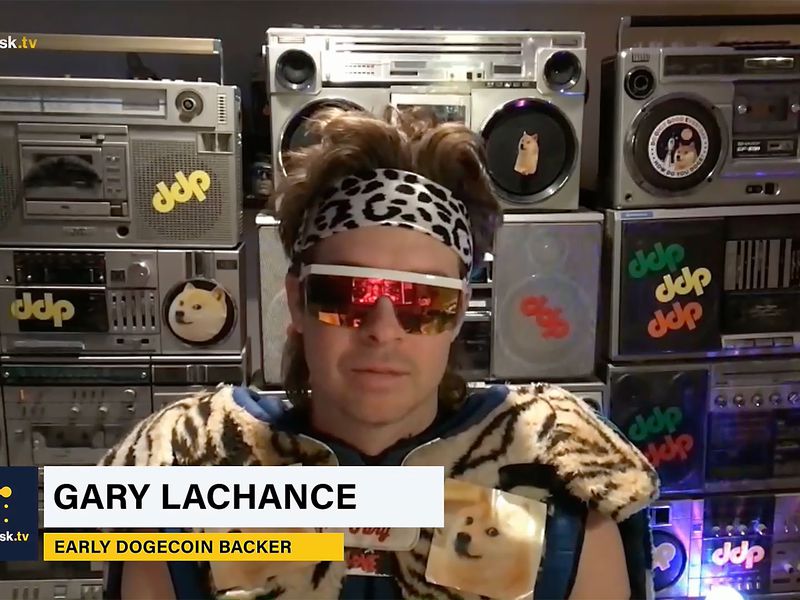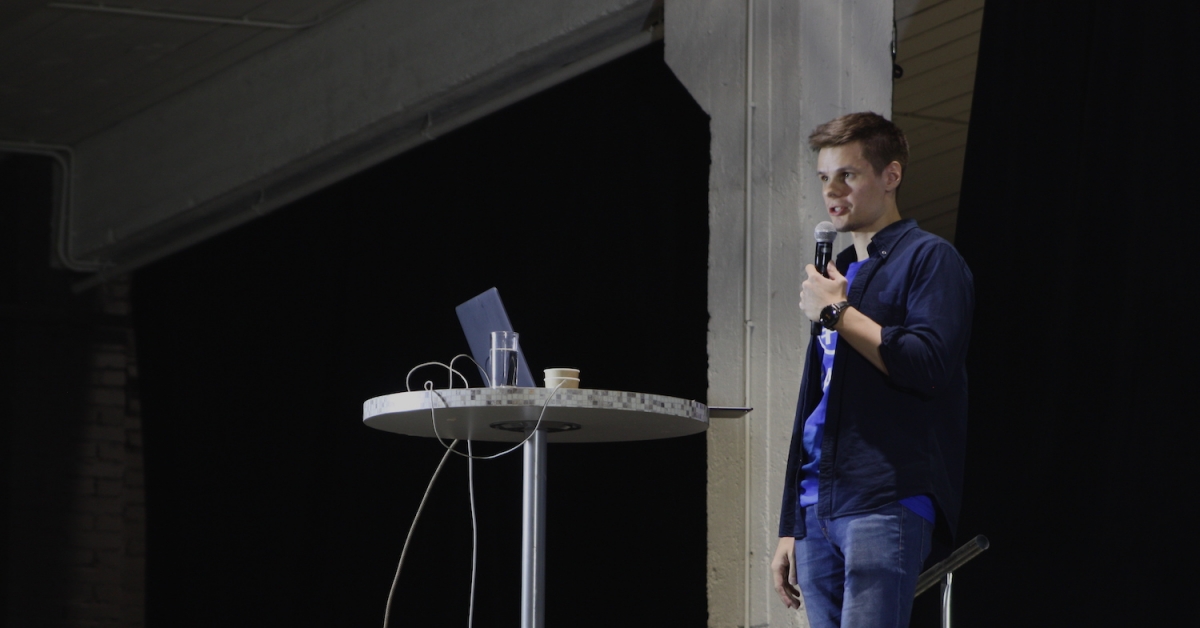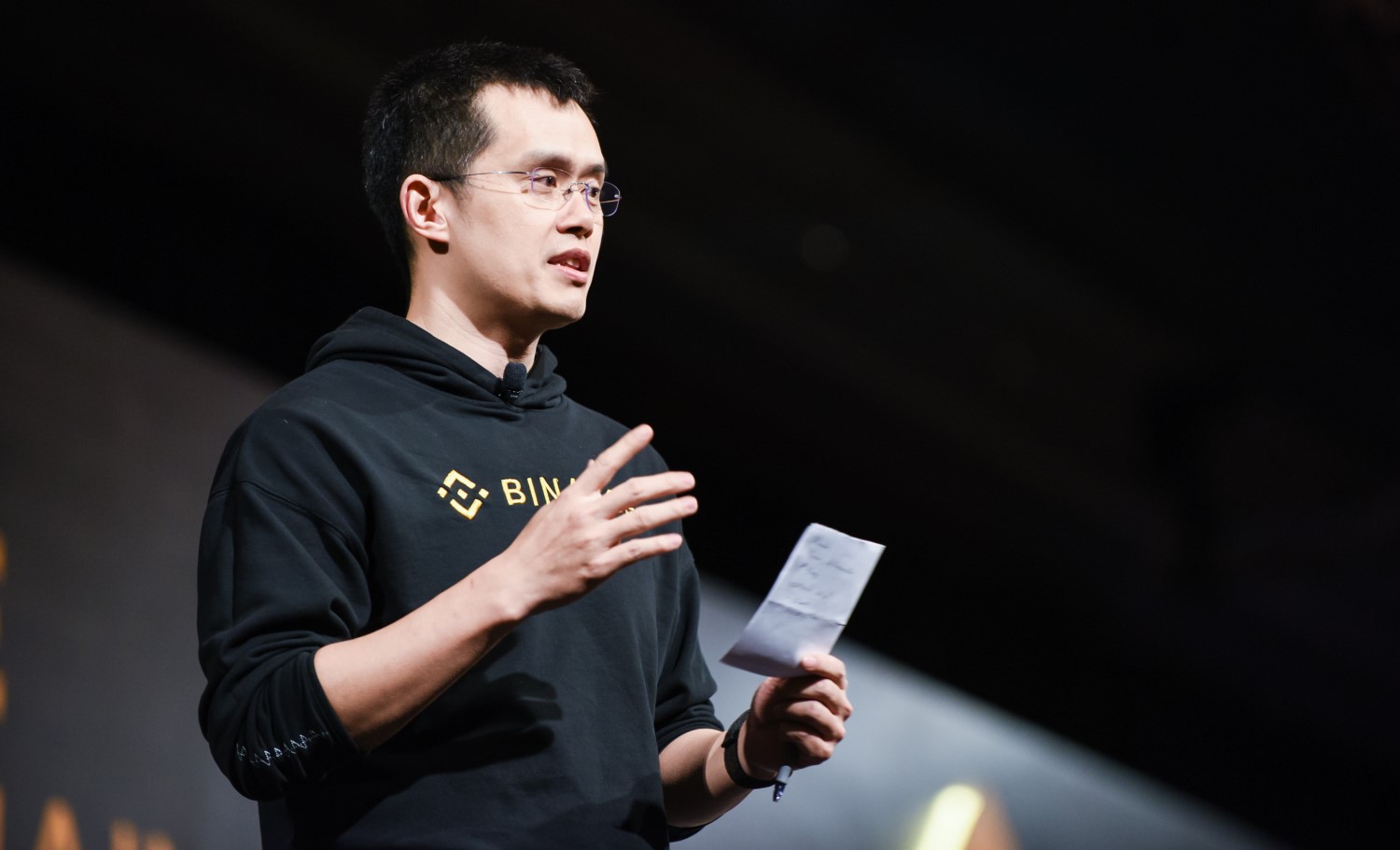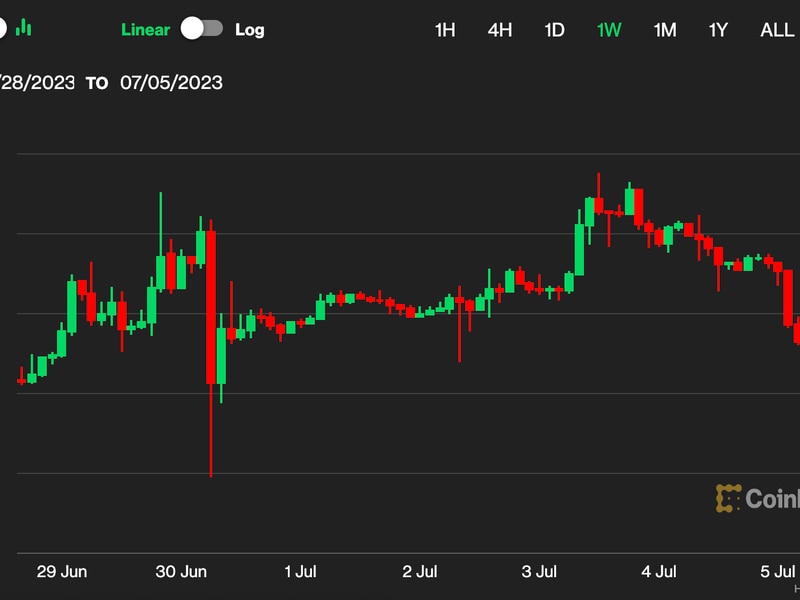Despite recent challenges to the crypto market, investment in Web3 remains high as institutions and consumers look toward an emerging digital culture built upon the values of decentralization and blockchain technology. While cryptocurrency and blockchain enthusiasts were formerly cast as fringe, vibrant communities have since sprung up on social media and across internet forums, bringing non-fungible tokens (NFTs), decentralized autonomous organizations (DAOs), play-to-earn gaming and the metaverse into the mainstream discourse.
Still, a recent report by Coinbase Institute shows a growing gap between the number of people who are aware of Web3 and the number of people who have actively adopted it. A survey of over 32,000 people across 16 countries revealed that while a majority of respondents were at least somewhat familiar with crypto or blockchain technology, many did not engage with Web3 services because of a lack of technical knowledge or not knowing where to begin.
“It’s one thing to go jump into Web3 having done your research,” Chris Jacquemin, head of digital strategy at global talent agency WME, told CoinDesk. “It’s another thing to really gradually move into this space, so it feels like you’re foundationally getting it correct. Mainstream adoption will probably look less like a conscious choice and will just happen to be powered by this technology.”
Here lies one of the fundamental problems Web3 faces today: supporters of blockchain technology, often referred to as “crypto-natives,” often joke about existing in an echo chamber, yet the barriers to entry remain high, effectively shutting out curious minds. For the average person, adopting new technologies can be a daunting and often clunky pursuit. Web3 education remains a major pain point for developers and consumers, and while the number of unique addresses deploying smart contracts has generally grown, the number of active wallets has shrunk across crypto sectors, pointing to lower engagement even among those already in the exclusive crypto club.
Coinbase Institute wrote in its survey that Web3 adoption is predicted to increase by 50% over the next three years. But the question remains, how will that happen?
While the gaming and ticketing industries have found creative ways to integrate blockchain technology and offer new use cases, it is the entertainment industry that makes the strongest case on how to naturally implement Web3 strategies and onboard the masses.
This piece is one of three in a series about the path to Web3 mass adoption. Read the case for gaming here and membership, loyalty and ticketing here.
Connecting with people through storytelling
In its most basic form, good entertainment connects with its audience on a human level. And while the digital world seems to be becoming increasingly isolating and driven by artificial technology, visual media can serve as a reminder of our humanity and community.
Independent Web3 creative network Atrium, in partnership with Web3 community NounsDAO, is releasing an animated film based on the popular NFT characters. The Nouns movie origin story is one that is wholly Web3. Nouns are open source, meaning that the entire collection is in the public domain and can be used to create anything by anyone. And the NounsDAO voted in favor of a proposal to fund the project, providing its producers with a budget of $2.75 million from its treasury.
Joshua Fisher, one of the founders of NounsDAO community offshoot SharkDAO, told CoinDesk that the NFT project – which releases a new Noun NFT every day in perpetuity – has been able to grow in popularity due to its art style and messaging. A testament to its success, the project currently has a floor price of 35 ETH (about $63,500) and has done over 17,684 ETH (about $32 million) in trading volume, according to OpenSea.
“The style and the storytelling, it just works,” said Fisher. “You don’t always know why or how but when you see something happening for years on end, and people like it, the chances are you poor little gasoline on that fire, it’s gonna burn.”
Supriyo Roy, founder and CEO of Atrium and the creative director of “Nouns: A Movie,” told CoinDesk that Web3 is changing the way media interacts with its audience, creating new opportunities for engagement.
“If you are starting with a story and you would want the community participating actively, even something as simple as giving a producer credit makes people feel like they’re a part of that story,” he said, adding that titles can be linked to rewards for fan participation. For example, he said fans can be given the chance to mint commemorative NFTs or enter into a raffle where they can win a cameo on a show or contribute to the writer’s room.
NounsDAO is tackling entertainment from all angles, building out an entire ecosystem through its recognizable characters. The group also voted to build out a comic book series with book publisher Titan Comics and NFT community ComicsDAO and previously approved a proposal for a short film “Welcome to Nountown.”
Adam Fortier, comic industry veteran and founder of ComicsDAO, said that integrating blockchain into his Nouns Comic series allows for greater provenance and tracking – which benefits both holders and creators.
“In comic books, your customer base is as everything,” he explained. “But you have silent customers that will buy everything that you do and hold on to them. You never hear about them because they never sell their product … But with Web3, you could actually track people who keep the product and you could actually reward them.”
Other visual media projects have integrated Web3 technologies into their audience engagement strategies, creating rich, interactive experiences for their viewers. Actress Mila Kunis used NFTs to raise funds for an animated series called “Stoner Cats,” while “Rick and Morty” co-creator Dan Harmon has long been developing a major network TV series called “Krapopolis” that allows NFT holders to vote on show elements. Web3 studio Toonstar has launched an NFT-backed animated series called “Space Junk” starring “Napoleon Dynamite” actor Jon Heder that invites holders of the related NFTs to create stories for their characters and participate in the narrative.
“The idea is that we are trying to tell stories that people can fall in love with,” said Roy.
Jacquemin, whose agency has signed more than 50 Web3 creators including Krista Kim and AI artist Claire Silver, sees common threads between all of the talent WME represents across film, music, television, comedy, books, art and theater.
“I think the common language here is creativity and storytelling,” he said. “So that’s definitely a link that I think exists with pretty much any of the clients that we’ve elected to represent.”
Global talent firm United Talent Agency (UTA) launched its Web3 division in 2021 in response to a growing interest in NFTs and how they could be used to enhance fan engagement, art and brand loyalty. The agency, which represents talent across film, television, music, sports and more, recently signed designer and NFT artist Bobby Hundreds, NFT project Deadfellaz and crypto influencer Andrew Wang.
Lesley Silverman, UTA’s head of Web3, told CoinDesk that she is particularly interested in blending blockchain technologies to create unique strategies for each of her clients.
“We get to work with some of the best minds to create new use cases for Web3 tools,” she said. “We’re seeing early success stories around decentralized fan engagement and brand loyalty, with huge pop stars to luxury brands and more. In an age where AI presents a question of digital abundance, I am excited about how Web3 tools will be able to assist with rarity and authentication.”
Using talent to evangelize Web3
Not only are blockchain tools helping to deliver more interesting and engaging stories, but they are also enticing new talent to break away from more traditional spaces to join Web3.
In building a creative collective, Roy said that talent from traditional media giants like Pixar, Marvel and Netflix are drawn to Web3 because it encourages more creative freedom and offers newfound access to community and tools that are otherwise not readily available.
“You are seeing something like Nouns coming in and completely upending the idea of how funding is acquired and how funding is applied to creative aspects,” he said.
Fisher added that Web3 is creating its own media environment, with competitive compensation and less structure that rivals major studios without corporate oversight. “It has to be that either the pay is equal, or the work is easier, or it’s less stressful than creating content for big corporations. There, you’re inevitably going to need the approval of somebody who probably has never made anything themselves. And that’s not always easy.”
According to Roy, Atrium has been able to cultivate a roster of major talents motivated by the promises of a creator-driven economy that affords artists greater ownership and monetization opportunities from their work.
“They don’t want to be a footnote in a large production,” he said. “The feeling of fulfillment and that feeling of autonomy is unparalleled.”
Web3 also allows talent to claim their ideas in an immutable and public way, providing new ways to support artists from the start.
“With any decentralized blockchain, you do have that ability to really mark your idea in the sand eternally for the rest of time,” Fisher said. “I do think when something becomes popular as a whole, the community … will give those flowers to the creator.”
Jacquemin explained that crypto-native talent understands the emerging Web3 culture being built on social media platforms like Twitter and are able to connect deeply with their followers in new ways.
“There is this persona that they kind of live behind,” he said, referencing the use of NFTs as profile pictures (PFPs) to signal identity and community affiliation. “There’s some uniqueness to that, but in a way, it’s not dissimilar to the idea of creating a film or a television show based on a graphic novel in that you’re essentially creating a character universe.”
“People might follow one of these personas because they really like what they stand for, what they represent, what they create, visually or audibly, or who they are in terms of thought leadership,” he added.
Celebrities have flocked to blue-chip NFT projects, like CryptoPunks and Bored Ape Yacht Club, to develop their online identities. For example, rappers Eminem and Snoop Dogg have used as their BAYC avatars in a popular music video that debuted at the MTV’s VMAs.
For many creators, Web3 tools can be used to enhance entertainment in a way that feels organic and not forced.
“I definitely think that there is an opportunity to build out fandom in a more interesting way with new Web3 tooling so the layer itself will be invisible and will be more custom made, where some of the unique user experiences can be powered right in,” Roy said. “Say you are watching something, maybe you can be rewarded for sharing it with your friends or for answering a type of trivia that you could only answer if you watched it. These are things that can be built on top of the ownership and composable stack, which is something that crypto enables you to do.”
Silverman said that as with any new technology, people may fixate on jargon instead of focusing on the user experience or end results. “I think the more the tools that facilitate necessary and unimpeachable new ways of interacting, the less people will focus on the terminology.”
This “stealthy” use of Web3 tools can help potentially skeptical talent wade gently into Web3, Jacquemin explained.
“One of the things that we recognized early on was that it felt like we were trying to teach people a new language,” he said of the initial friction with Web2 clients exploring Web3 tools. “Instead, we started to look at aspects of our clients’ businesses that exist today that you could put a spin on with a Web3 element that wouldn’t create friction in the user experience.”
Additionally, Web3-native talent can find ways to connect with more traditional Web2 brands or mainstream consumers by making their Web3 offerings more accessible.
“There’s a better quality or a deeper quality of individual data that is transparently collectible,” Jaquemin said.
While more people are familiar with the word “Web3,” the concept has struggled to keep audiences engaged. Attention – already a scarce resource in our modern age of information overload – is shifting to other shinier technologies like artificial intelligence.
But visual media entertainment remains a multi-billion-dollar business and the global visual content market is expected to grow by $1.4 billion by 2026. Americans spend over 13 hours on average a day using digital media, and new platforms and gadgets are continuously being developed to create a more immersive user experience. The average U.S. household owns an average of 11 connected devices, including seven with screens.
Hate it or love it, our need for entertainment is omnipresent and our craving for visual stimuli remains a major economic driver. Major players, like Warner Bros., Netflix, Sony, Paramount, Village Roadshow have already started experimenting with Web3 tools in order to stay competitive.
“I think so much has yet to be explored successfully around film and television as it relates to Web3,” said Silverman.
From creating rich NFT ecosystems to integrating crypto payments into existing models, entertainment giants, talent agencies and creative networks continue to find new ways to organically weave in Web3. Ultimately, consumers will be motivated to embrace an emerging digital future not through fanciful tech, but rather through engaging experiences designed to delight.
“You don’t have to say ‘Hey, this is a Web3 project.’ You don’t have to say that something is based upon an NFT or that this is a crypto thing,” said Fortier. “You could just say ‘Here’s this animation. You like it?’”
Edited by Toby Leah Bochan.









